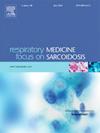Bleeding risk assessment with thromboelastography in interventional pulmonology procedures
IF 3.5
3区 医学
Q2 CARDIAC & CARDIOVASCULAR SYSTEMS
引用次数: 0
Abstract
Objective
Thromboelastography (TEG) offers a point-of-care and comprehensive evaluation of the coagulation cascade, but its utility in predicting bleeding risk in Interventional Pulmonology (IP) procedures has not been thoroughly investigated. This study aims to evaluate the effectiveness of TEG in assessing bleeding risk in patients undergoing elective IP procedures.
Material and methods
Retrospective study of patients who underwent elective IP procedures at Mayo Clinic (Jacksonville, FL, USA) from November 2022 to May 2024. Patients had TEG performed within a day before the procedure and met standard coagulation criteria (INR<2, platelets>50,000/mm³). The primary outcome was the incidence of bleeding, defined by validated scales. The association between TEG results and bleeding was analyzed using Fisher's Exact test and binary logistic regression.
Results
76 patients were included, 13 (17.1 %) experienced bleeding despite “normal” coagulation panel. Of these, 10 (14.93 %) had a non-hypocoagulant TEG (p = 0.082) suggesting no statistical association of TEG results and bleeding. TEG showed high specificity (94 %) but low sensitivity (23 %) for predicting bleeding risk. Hypocoagulant TEG provided a 5.1-fold increase in the odds of bleeding in our study (OR 5.1, 95%CI: 0.84–31.29, p = 0.066). Notably, TEG results identified 8.9 % (n = 6) of patients as hypocoagulable and 50 % experienced bleeding, highlighting the potential value of TEG in identifying patients at higher risk.
Conclusion
TEG may offer additional value in pre-procedural bleeding risk assessment in IP procedures, particularly due to its high specificity. However, larger-scale studies are needed to confirm these findings and to better understand TEG's role in this context.
求助全文
约1分钟内获得全文
求助全文
来源期刊

Respiratory medicine
医学-呼吸系统
CiteScore
7.50
自引率
0.00%
发文量
199
审稿时长
38 days
期刊介绍:
Respiratory Medicine is an internationally-renowned journal devoted to the rapid publication of clinically-relevant respiratory medicine research. It combines cutting-edge original research with state-of-the-art reviews dealing with all aspects of respiratory diseases and therapeutic interventions. Topics include adult and paediatric medicine, epidemiology, immunology and cell biology, physiology, occupational disorders, and the role of allergens and pollutants.
Respiratory Medicine is increasingly the journal of choice for publication of phased trial work, commenting on effectiveness, dosage and methods of action.
 求助内容:
求助内容: 应助结果提醒方式:
应助结果提醒方式:


